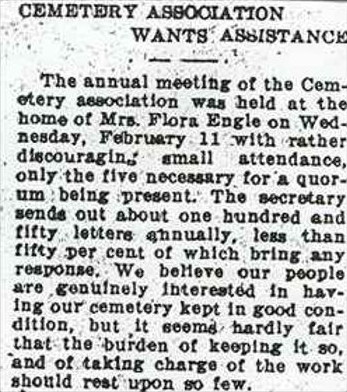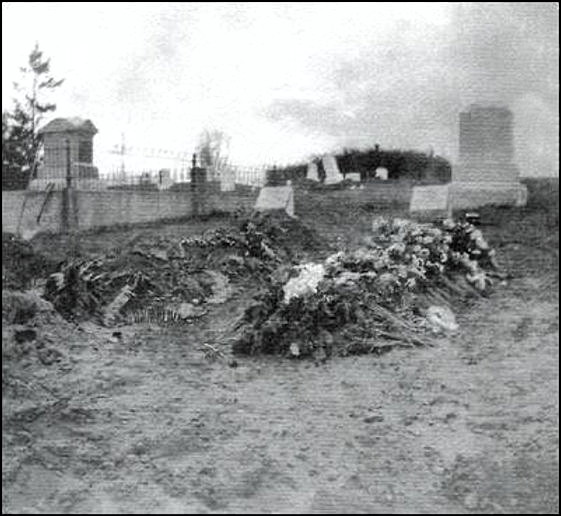The History of Sunnyside Cemetery
1958 - 1965


2-20-1931
By the late 1950s, Sunnyside Cemetery had reached a critical turning point. The Cemetery Association formed in 1922 barely functioned due to the community's lack of interest, a reality reflected in the cemetery's unkempt appearance. Lot owners who wanted to ensure the upkeep of their lots did the job themselves or hired local boys to mow their family's gravesites. Dale Sherman, son of Edwin Sherman and the recent cemetery sexton recalled, "I would get five dollars to take care of a lot for the summer [and] made forty or fifty dollars. It was good money because you mowed them, like, twice. And then it quit growing. Just dandelions and dead grass." But those graves that lacked owners became enveloped in vegetation, and while the Coupeville Lions Club periodically tackled the job, it was not enough to keep the cemetery in good repair.

Photo courtesy of Lillian Huffstettler
Complaints about Sunnyside's appearance and its lack of supervision came to the attention of Island County Commissioners. Just as they had requested Billy Sherman's assistance in 1922, they now asked his son, Clark, to head a "cemetery board." Clark Sherman and his wife, Dorothy, lived on the cemetery's northern edge, having purchased the acreage from Win Cook's widow in 1947. At the request of the county commissioners, Sherman took on the task of raising public support for a cemetery district that would permanently care for Sunnyside, an effort that took almost six years. On September 21, 1964, Sherman placed a petition before the county, asking that a public hearing be held on the formation of a cemetery district. The hearing convened on October 13, at which time it was agreed to put the creation of a cemetery district before the voters. On November 5, 1964, as Lyndon Johnson was elected president of the United States, central Whidbey voters agreed by a four-to-one margin to create a new taxing district to care for Sunnyside Cemetery. The following April, one hundred years after Mary Ebey Bozarth buried her brother, Winfield, on their parent's farm and started the Ebey Grave Yard, Island County formally issued a quit-claim deed for that cemetery [and the other plats that had been joined to it], to Island County Cemetery District No. 2.
The task of taming Sunnyside's landscape presented proved difficult for its new commissioners, Clark Sherman, Bob Hancock, and Chuck Arnold, because they initially lacked revenue to fund the work. But they were aided in their task by two individuals: Werner Arnold, the cemetery's new caretaker, and Jimmie Jean Cook, the cemetery district's secretary and a strong preservationist. Cook quickly published an article in the local newspaper in which she observed that Sunnyside's historic markers had "all but disappeared behind the waist high foliage ... To reach the Ebey plot one must blaze a trail through nettles and high grass." Mindful that it would take time for the cemetery district to accrue enough tax funds for maintenance projects, Cook issued a public call for community groups to help clear the cemetery. They responded and, just as the first cemetery association had done in 1913, they dealt with the overgrown graveyard by setting fire to it, thus clearing the way for a new era of preservation and care in Sunnyside's history.
